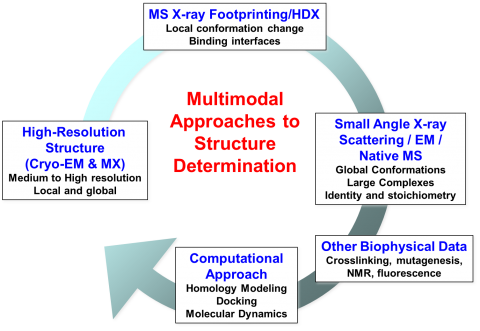At NSLS-II, all five beamlines in the NSLS-II Structural Biology Program are co-located in a single area of the facility, with both user laboratories and a facility for biological Cryo-EM (Laboratory for BioMolecular Structure, LBMS) nearby. This provides an advantageous environment for the user community to readily apply multi-modal approaches to their research problems. In particular, the close proximity of beamlines and staff can promote ad hoc interactions in which researchers become aware of new techniques and methods that they can apply to their research, further enhancing the chances of success. The NSLS-II user program promotes this approach in the structure of user proposals for beamtime. Single investigator general user proposals can request time on up to 3 beamlines in a single proposal, while a second proposal type, called block allocation groups (BAG), allows groups of institutionally or scientifically connected users to band together and obtain flexible beamtime on up to 5 beamlines for a period of 2 years.
The figure below shows our concept of how these NSLS-II synchrotron technologies can connect with one other in a multimodal approach. Macromolecular crystallography (MX), available at the FMX, AMX, and NYX beamlines, is the most fundamental technique of all approaches providing high-resolution structure and both local and global structural details. Footprinting (at XFP) and solution scattering (at LiX) are complementary solution biophysics methods well suited to studying structure and dynamics of large macromolecular complexes. In particular, MX can provide static high-resolution structural information, while footprinting gives structural insight into local conformational dynamics at the binding interfaces and solution scattering can provide structural details on the overall global conformation of the full complex. In addition, Cryo-EM is emerging as a very competitive technique for structural insight, with rapidly improving resolution capabilities. These structural probes, connected to laboratory-based methods and computational approaches, can provide a comprehensive picture of biological structure-function relationships relevant to a wide range of biomedical research problems.
We welcome inquiries from the community on integrating multimodal approaches into their research; contact us with your questions or problems!
Figure. Multimodal approaches to structure determination, highlighting the use of multiple techniques such as Cryo-EM, crystallography, small angle X-ray scattering, and X-ray footprinting together with computational approaches and other biophysical data to solve structural biology problems.


